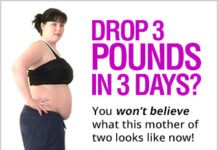Building a caregiver bond is important for many reasons. The first reason is to find peace of mind in the caregiver and recipient of care. This obligation is a tangible combination of the resources you have at your disposal to assist in your role as caregiver.
The caregiver’s obligation should include all the necessary details of the caregiver’s needs. It should be practical to accompany the caregiver and caregiver when visiting healthcare providers. Many doctors will ask about the medications you use to make sure they have the most up-to-date list. If they make changes, you can update the list immediately.
Create at least two copies of the caregiver’s obligation. Keep one copy at the client’s home and one copy at the caregiver. Update all copies as things change, and enter the change date next to each installation. Login dates ensure you have the most up-to-date information.
There are a few options for building a caregiver bond with copies. The hard copy makes great sense for the main copy to remain with the recipient of care. That way all care providers who enter the home of caregivers are able to access their details.
Another option, perhaps a copy, is in digital format. Digital format options include – applications on smart phone or file sharing in the cloud, or online. This format can be useful for not having to keep the obligation to you, but practical and easy access to the information of the care recipient. I recommend creating a physical bond first, and then deciding which option to choose for a copy.
Choose a three-tone tie with a pocket inside the front and back covers of the visible copy. Some binders have a zippered version that will keep things from falling off, while others have pockets inside. Sheet protectors and tab dividers help organize quick and easy access categories.
As mentioned above, each obligation should contain as much detail as necessary, and will specify the needs of caregivers. Below is a list of items that are usually included in the maintenance obligation. Select the items you see needed to create your binder and collect them, or create these documents. Enter some required documents that may not be registered here.
Important details of the recipient of care
Emergency contact list
Contact list for medical professionals – doctors, physiotherapists, physiotherapists and orthopedists, mental health professionals, social workers, pharmacists, etc.
Drug lists, dosages, schedules and who provides medication administration
A list of allergies, medications and environmental and how they manifest themselves
Appointment calendar
Contact details for domestic workers, their schedules and a description of the services – this is important to manage
Medical records
Release orders from hospital stay
Many copies of high-quality guides, medical professionals who have been given a copy and the date the copy was given – the date given is important because if the specialist says they do not have a copy, that could be a red flag for their record keeping capability.
Multiple copies of power of attorney (POA’s), list of experts who have been given a copy and the date of the copy – the date given is important because if the expert says they do not have a copy, that could be a red flag for their ability to keep records
List of food needs if needed
List of income sources, monthly expenses, payment details, debtors and payment plan
After creating the first body bond, decide how you want to make a copy or copies. Remember to renew all copies in the event of a change. If you choose to make a backup copy, rewind the steps you took to create the first caregiver bond. Going with digital copies makes more sense when you have a lot of caregivers. File sharing allows information to be shared in real time, so everyone can have the most accurate information at any time.
As mentioned above, there are a few options for building a digital caregiver bond; applications on smart phone or file sharing in the cloud, or online. There are many smartphone editing apps and you should do some research to find what works for you. My preference for editor apps and I use Evernote. It has many text editing features that include file sharing. Other file sharing options include Dropbox and Google documents.
If you decide on a digital option to use, scan, or take a picture with your mobile document in a portable binder and add it to your smartphone application or file sharing option. Then, if applicable, share texts with your caregiver circle to stay informed.













[…] and position to suit your purpose. But rest assured, this type of exercise is only possible on a heavy bed or more on a cotton mattress. Do not use foam or coir mattresses on […]